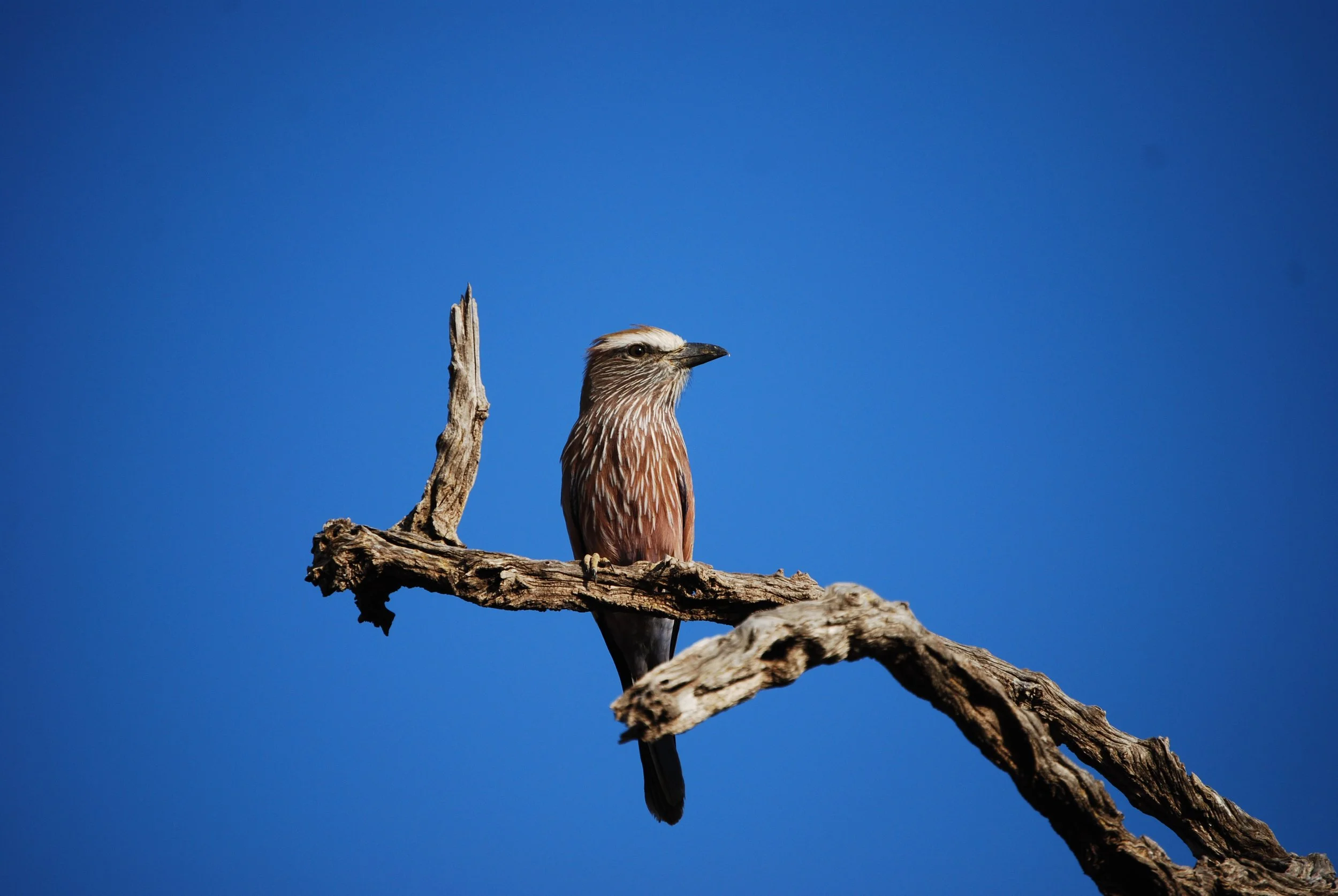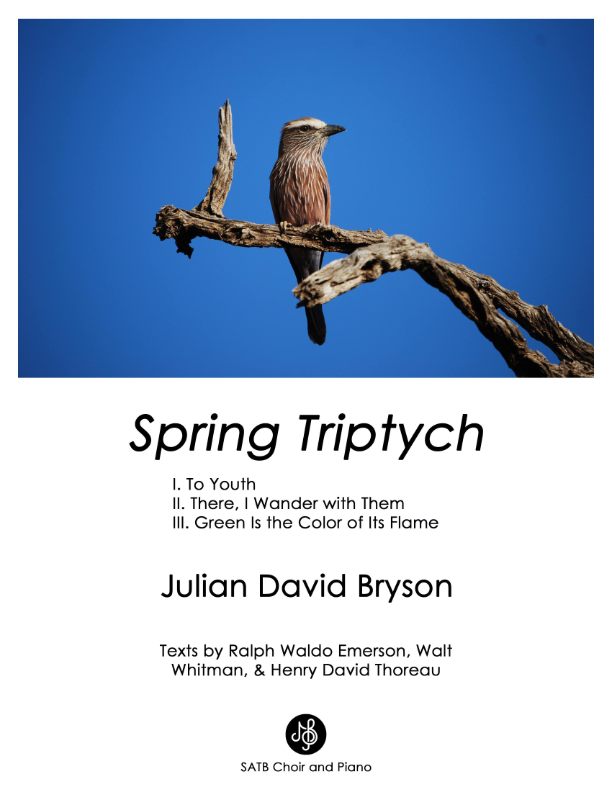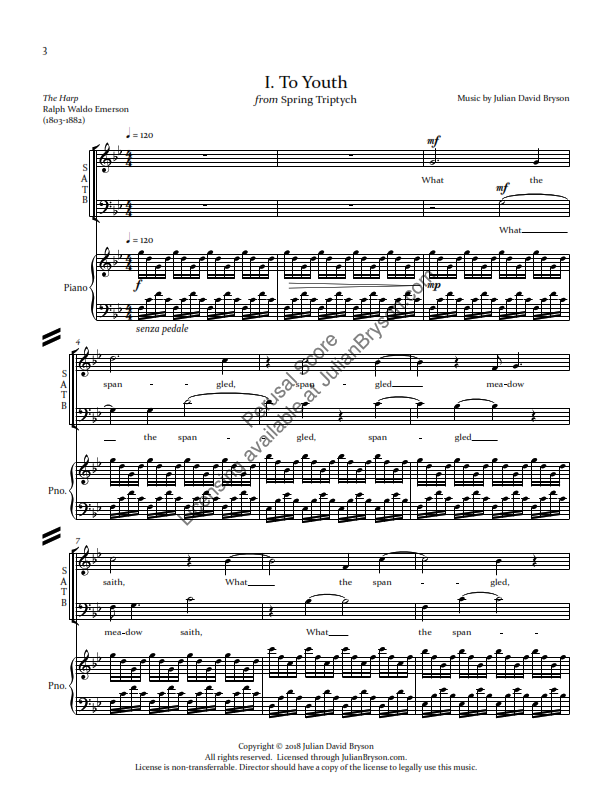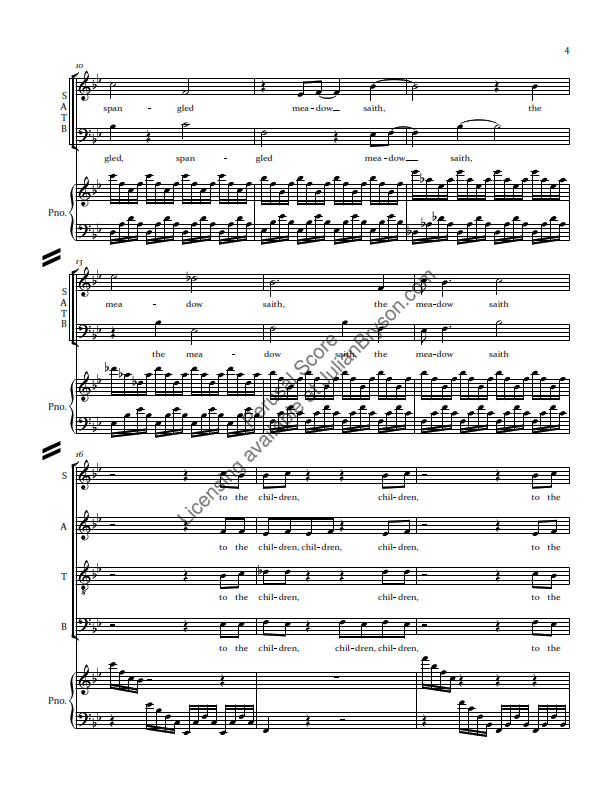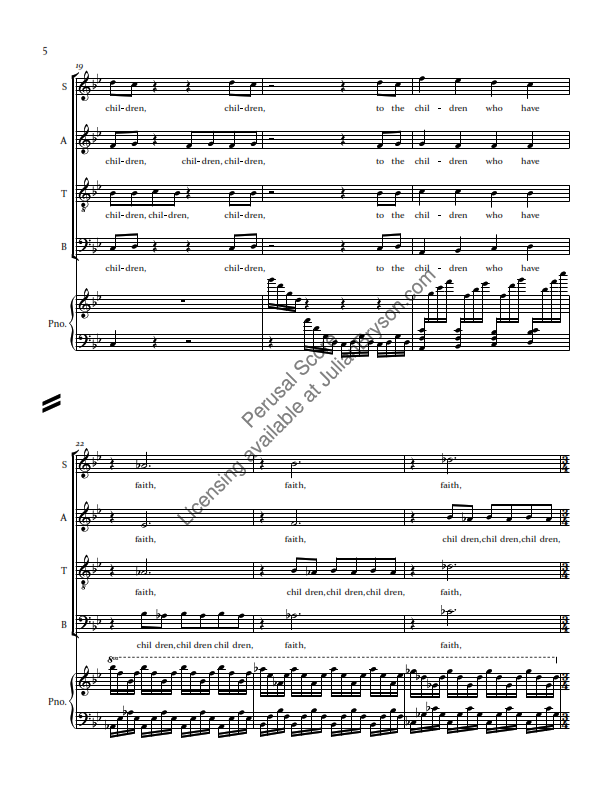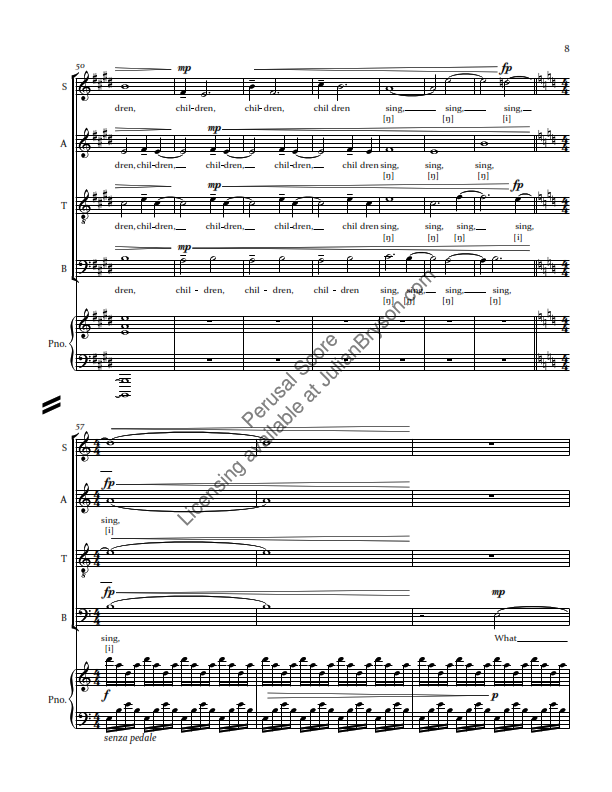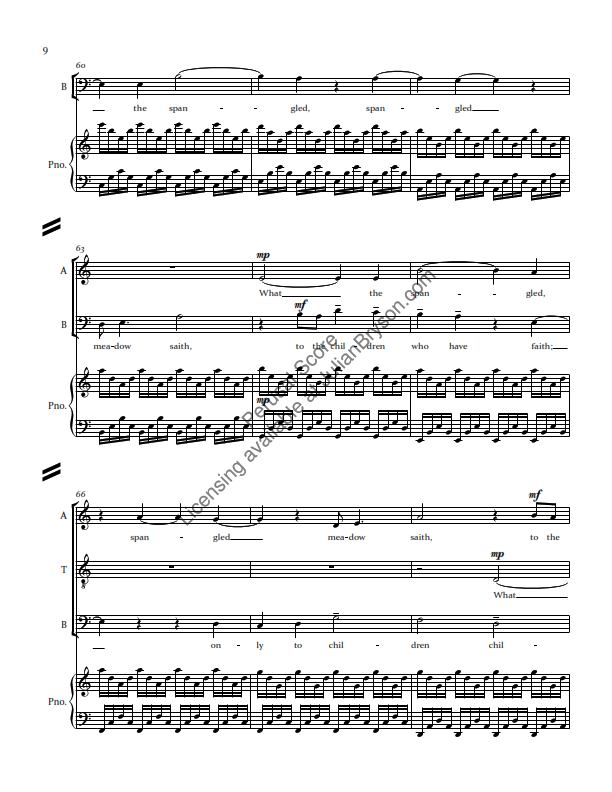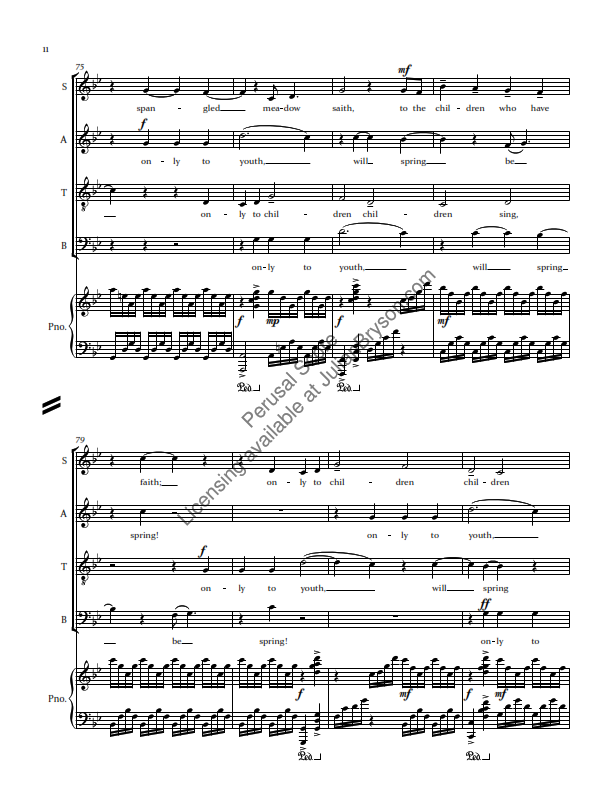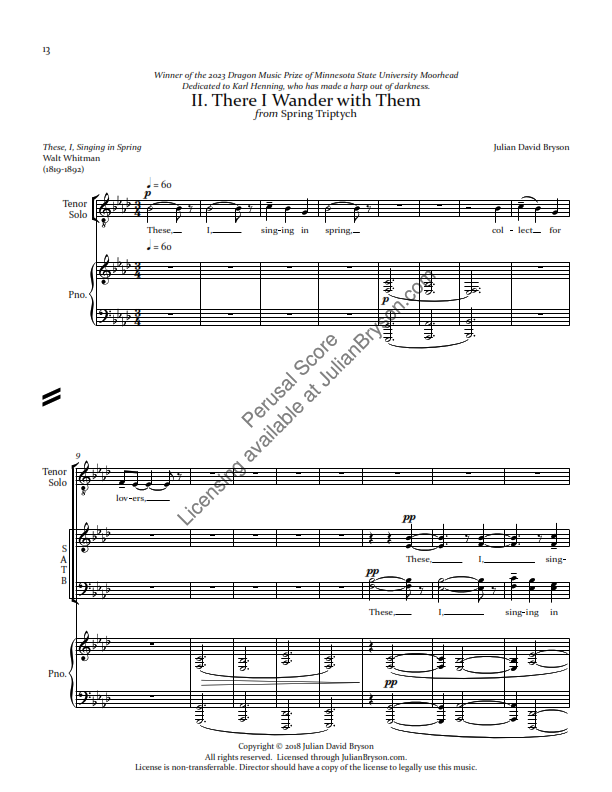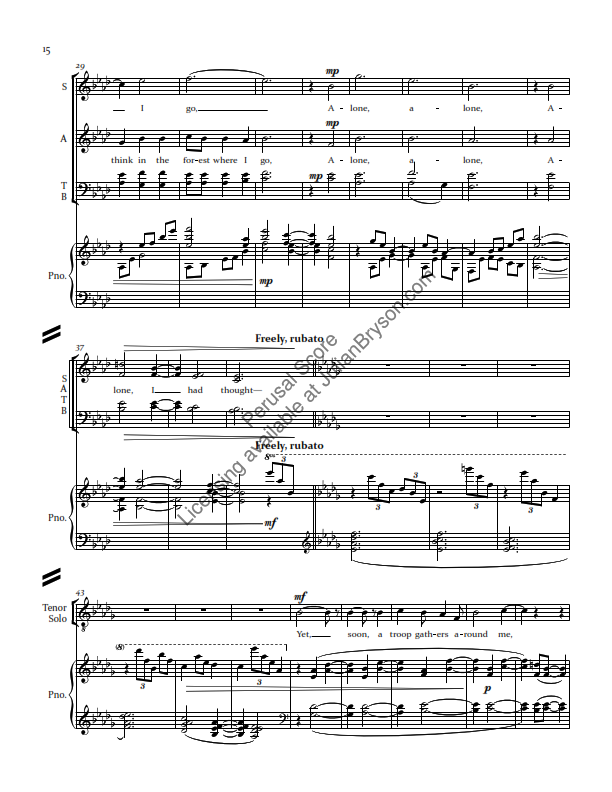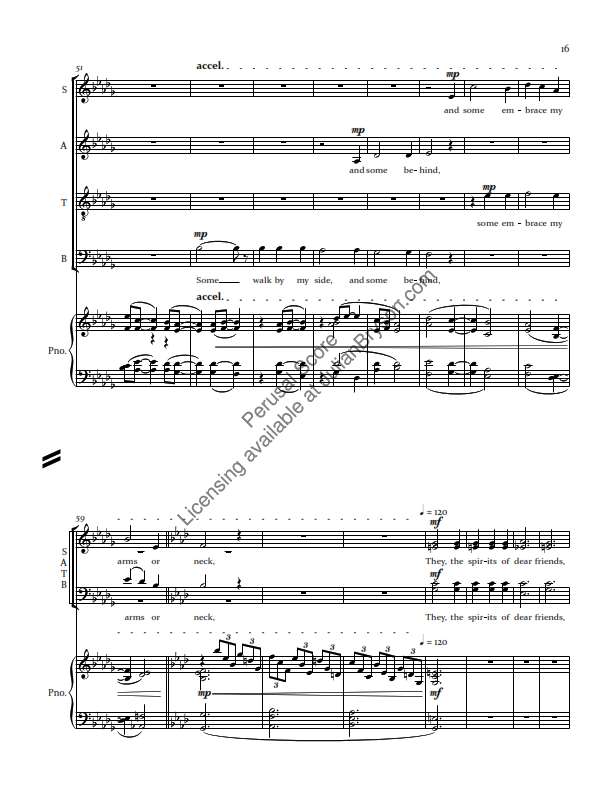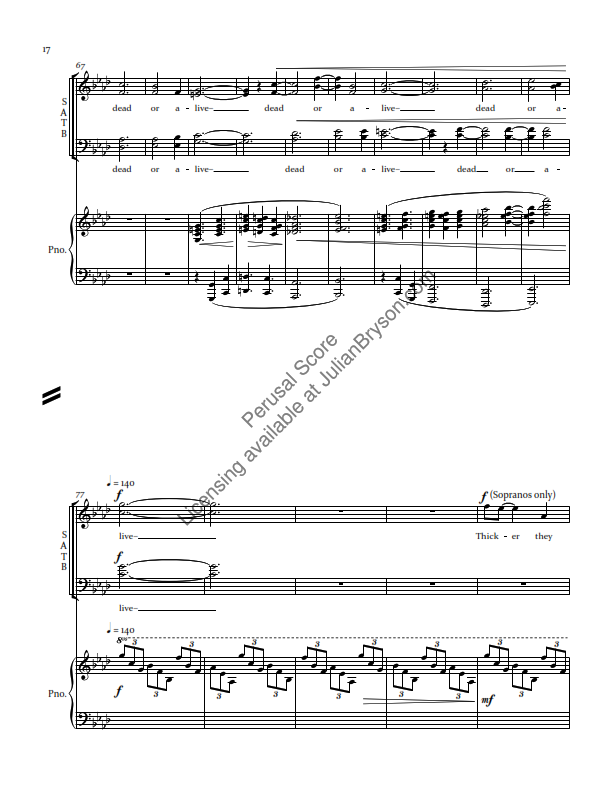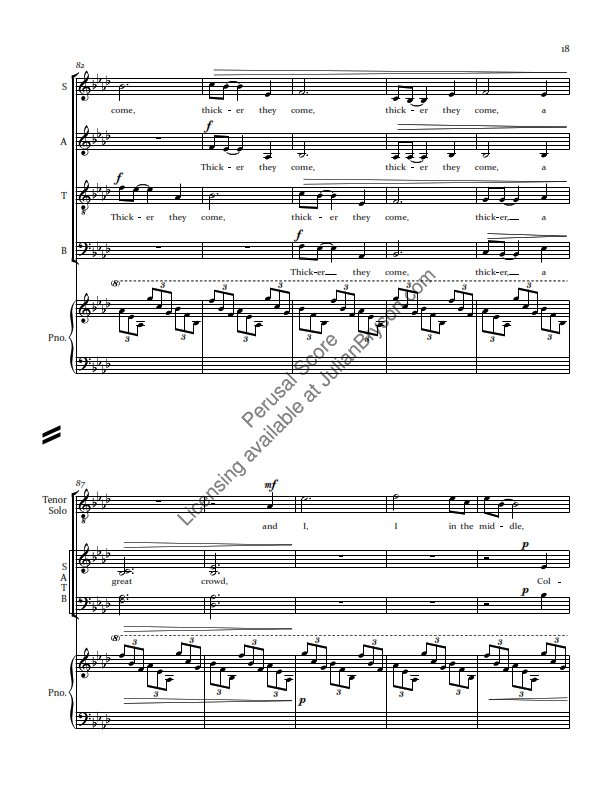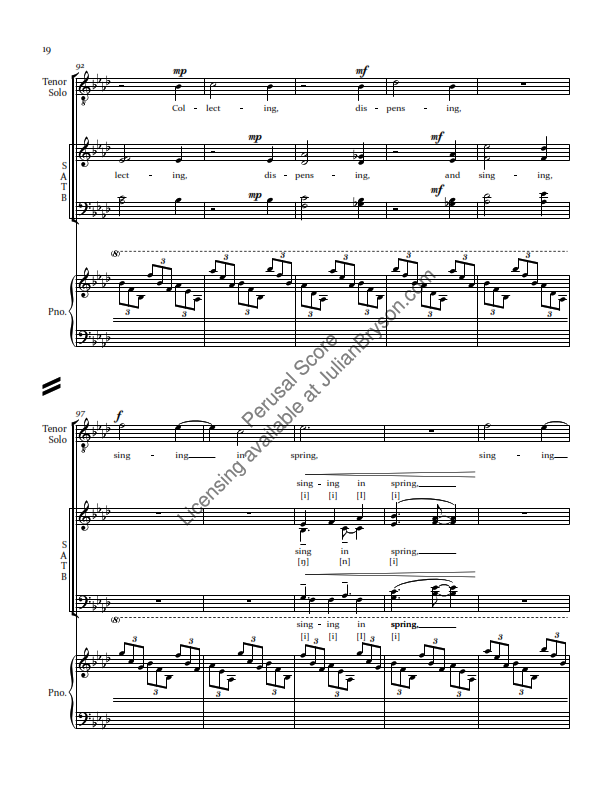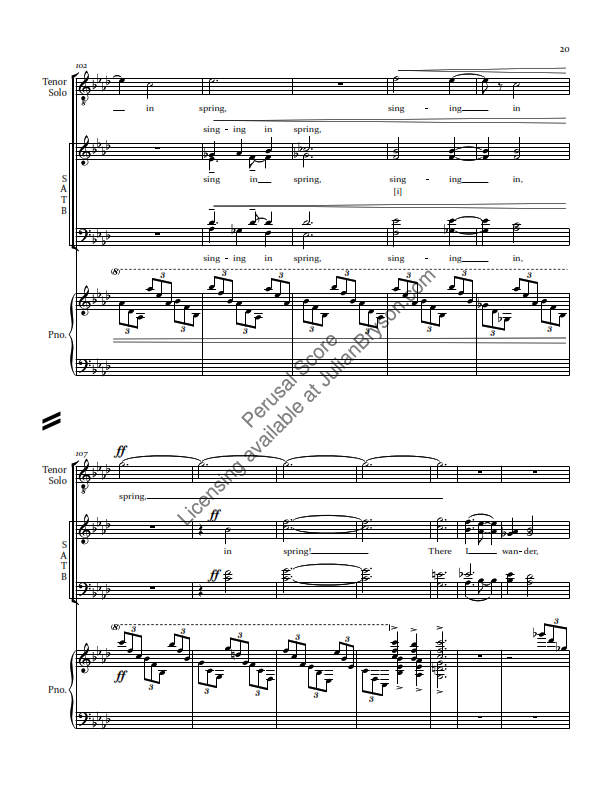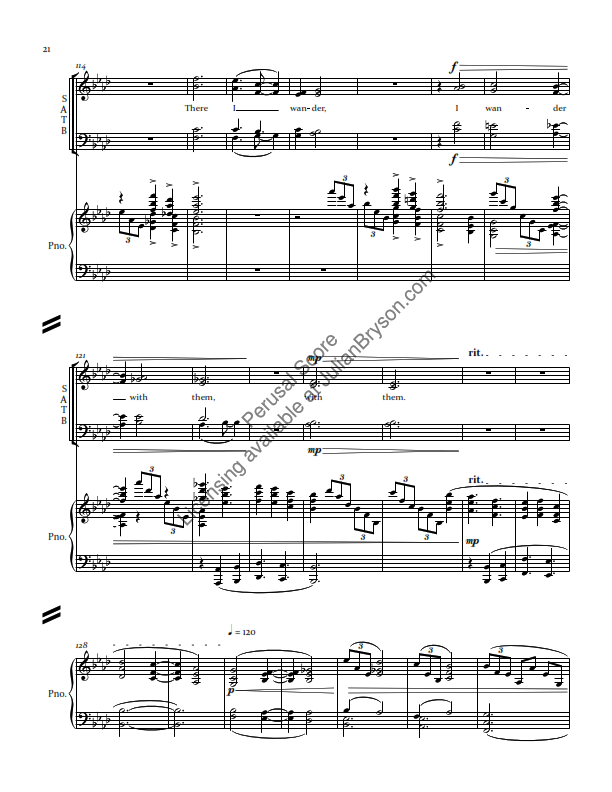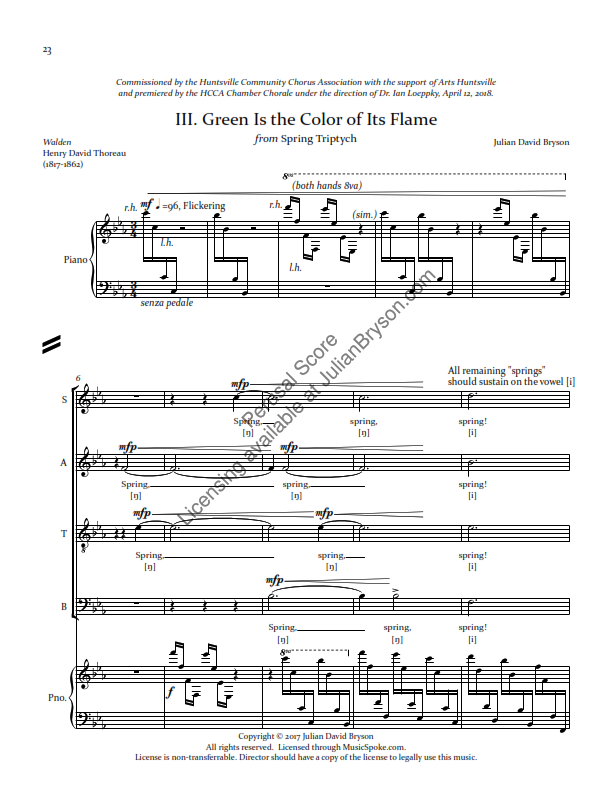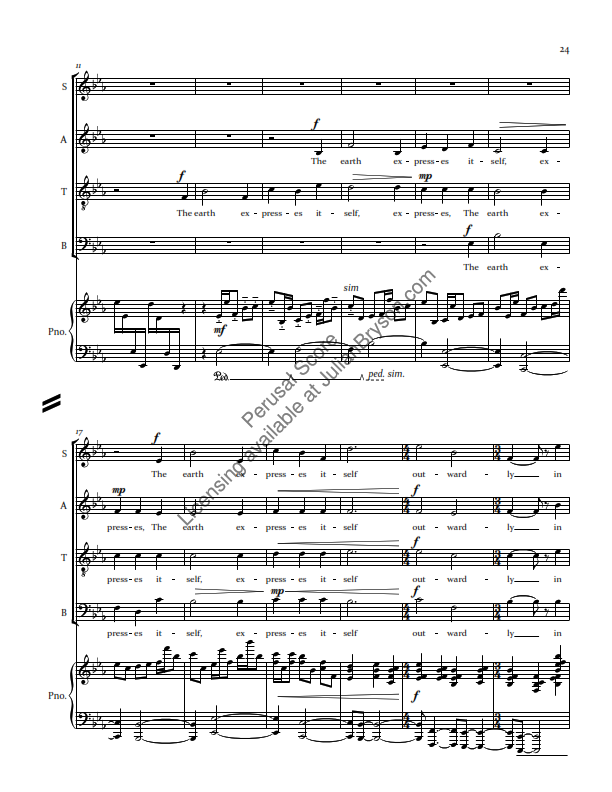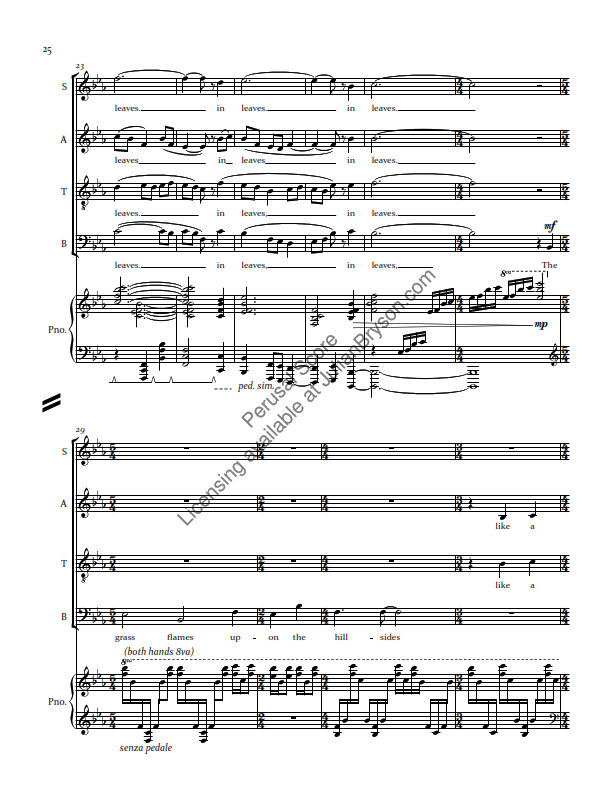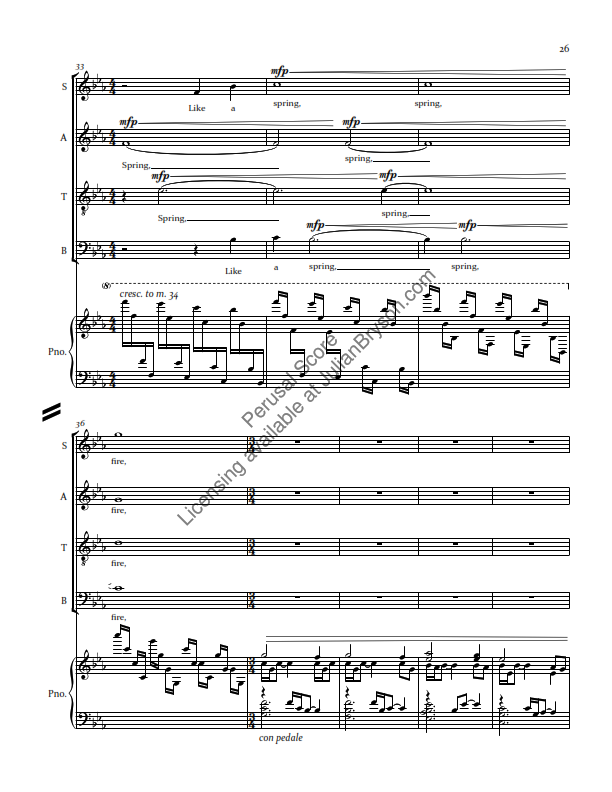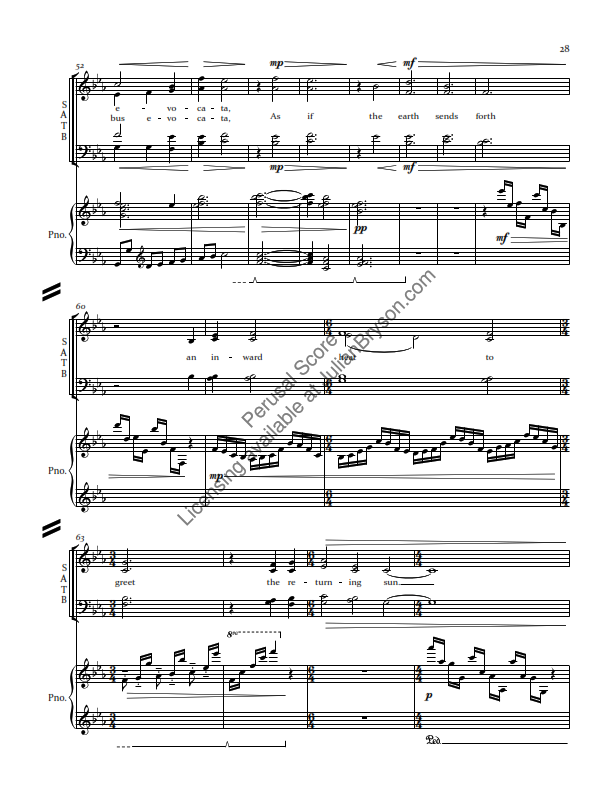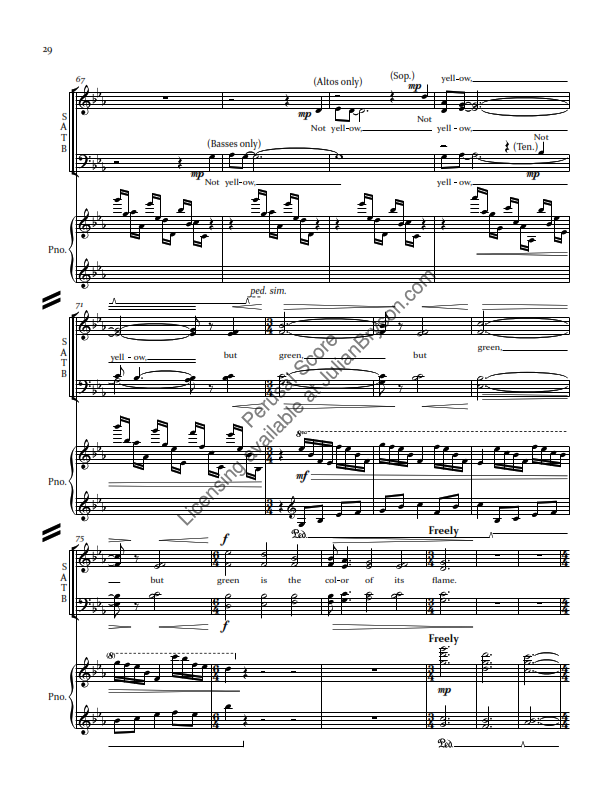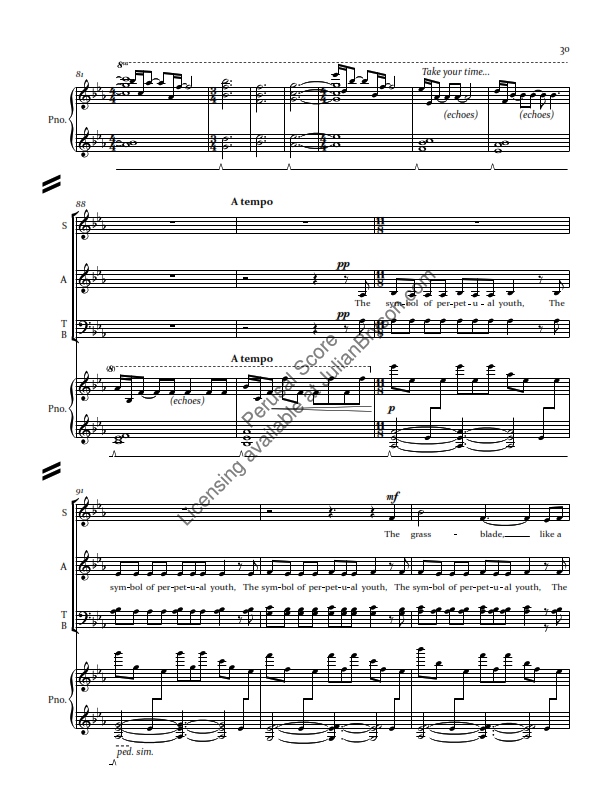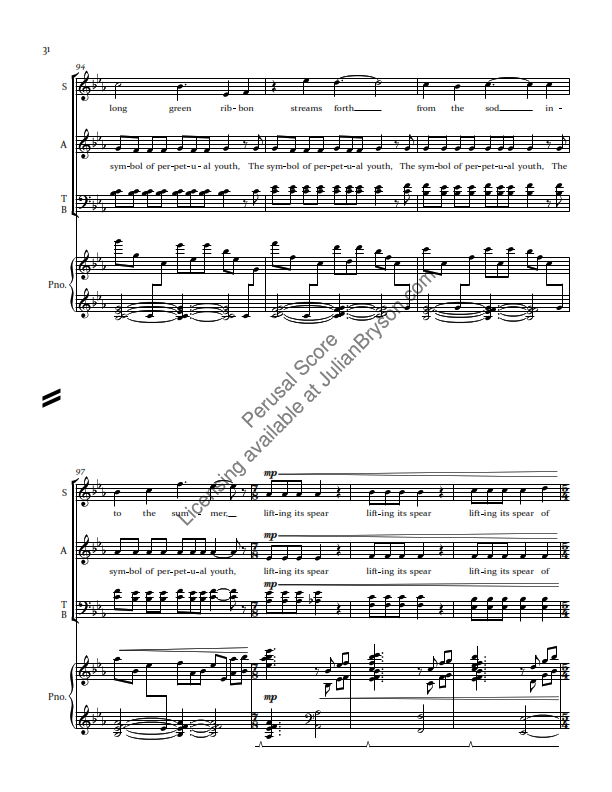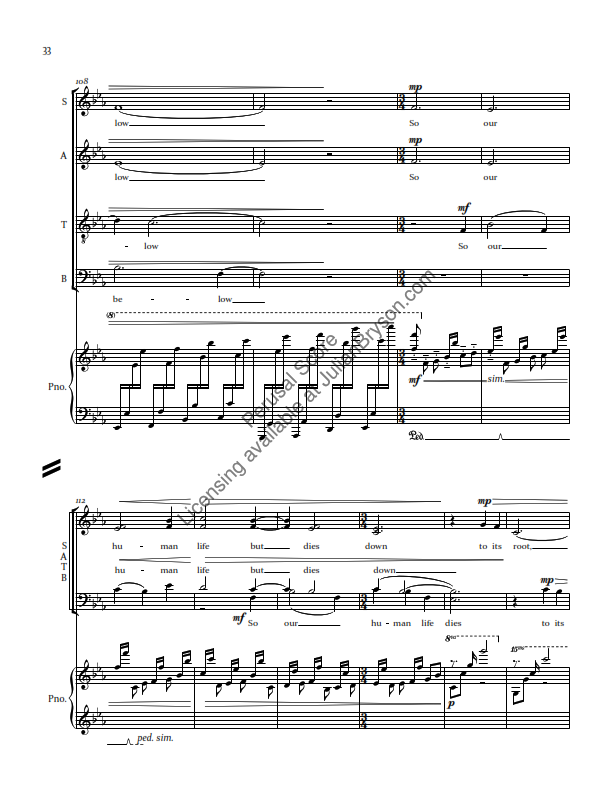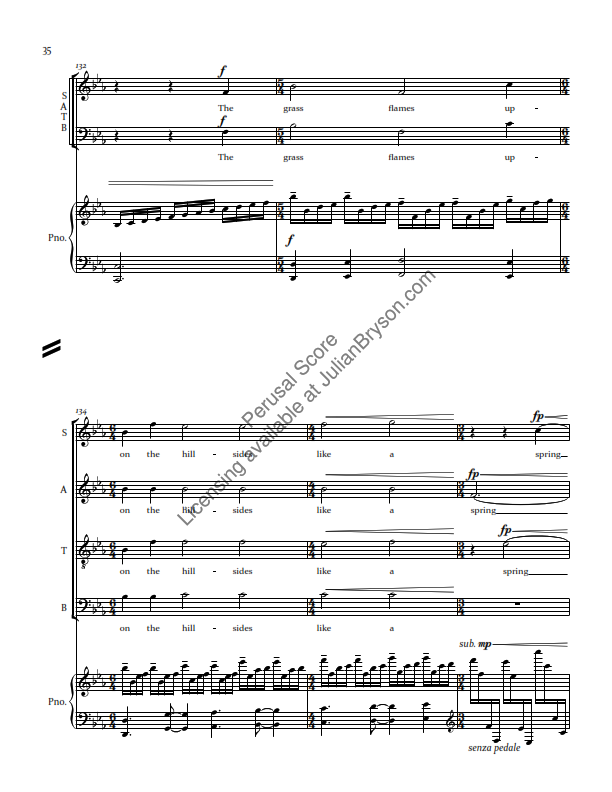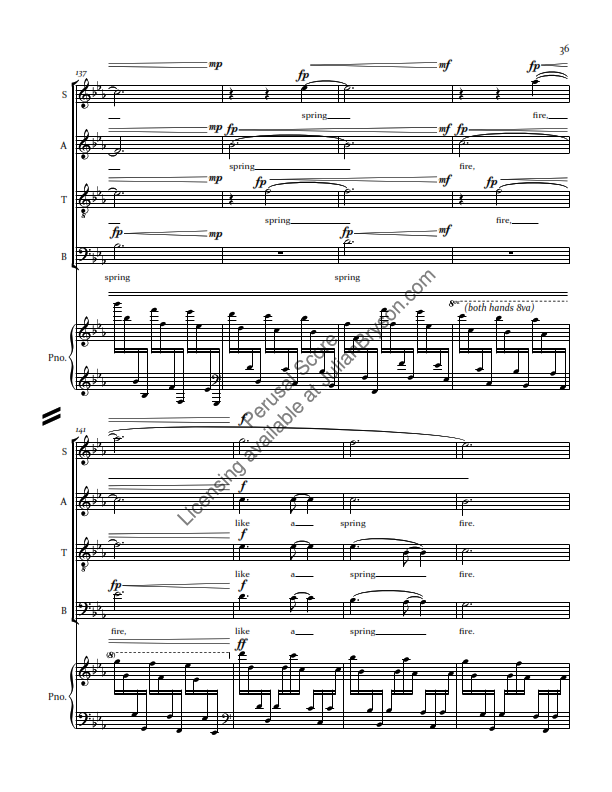Spring Triptych
Spring Triptych
A trio of spring tributes!
SATB, Tenor Solo, with Piano
“Write about spring!”
These were the words that launched this triptych. Ian Loeppky commissioned me to compose a work to conclude a concert about spring, and I found myself drawn to the transcendentalists. Each of these poets found inspiration the natural world, and the depth of their understanding continues to resonate even today.
To Youth bursts with the enthusiasm of innocence, youth, and spring for all who have faith enough to receive it. I particularly love how Emerson connects these themes with the power of song—as if these words were begging for musical accompaniment. This movement awakens our inner child to celebrate the beautiful world blooming around us.
By contrast, There I Wander with Them begins in stark solace. A lone voice sets out to collect flowers to celebrate others’ love—a kind of relationship he doubts will ever be possible for himself. However, the journey gradually reveals a supportive community and myriad opportunities to connect with others. Occasional sparks of “fire” find grounding in “earth”, while the “meadow” meets the “forest”, referencing the joy of youth past and foreshadowing the green flame of chosen family awaiting just around the corner.
As a gay man who grew up in a fundamentalist church, I have some experience navigating complicated relationships. My experiences continue to affirm the necessity of seeking community among both biological and chosen families.
Life is a tapestry of connections, and we die in isolation.
I dedicate this central movement to my friend, admired colleague, composer, and fellow Triad collectivist, Karl Henning, who has quite literally made a harp out of darkness. May he and all of us always recognize the troop gathered around, that we may wander together.
Thoreau’s unique blend of scientific observation and creative writing has transfixed me ever since I first encountered it in an undergraduate literature course. His prose resounds more than much poetry, and thus Green Is the Color of Its Flame demanded to be set to music first.
The musical nucleus of all three movements stems from my transcription of “SPRING” into a diatonic pitch set: Eb C D F Bb Eb. After some experimentation, I discovered the playful, flickering octaves motive, employing it as recurring metaphor for wind, flame, rebirth, life, and all things spring. In time, the two remaining pitches of the major scale appear. G bursts forth on the first statement of “fire”, while Ab hearkens to the “first rains of autumn”. The middle section primarily oscillates between these two pitches, where the text contrasts yellow with green, hay with grass, last year with fresh life.
The closing section reprises the opening material, now balanced with the full diatonic scale and building to a climactic finish. In a sense, the annual cycle passes from the opening spring through dry, yellow, summer hay and crisp, cold, piano interludes into a resounding wildfire of green life.
In this final triumph, may we be inspired, even in the deadest of life’s winters to put forth our “green blade to eternity”, move from “sod into the summer”, and strive toward “fresh life below”.
Spring compels us to begin anew our own, unique story; what will you “write about spring”? —J.D.B.
The Harp
Ralph Waldo Emerson (1803 – 1882)
What the spangled meadow saith
To the children who have faith;
Only to children, children sing,
Only to youth will spring be spring.
These, I Singing in Spring
Walt Whitman (1819 – 1892)
These, I, singing in spring, collect for lovers,
Far, far in the forest, before I think where I go,
Alone I had thought—yet soon a troop gathers around me,
Some walk by my side, and some behind, and some embrace my arms or neck,
They, the spirits of dear friends, dead or alive—thicker they come, a great crowd, and I in the middle,
Collecting, dispensing, singing in spring, there I wander with them,
Walden, XVII. Spring
Henry David Thoreau (1817 – 1862)
The earth expresses itself outwardly in leaves.
The grass flames upon the hillsides like a spring fire,
“et primitus orbitur herba imbribus primoribus evocata,”
(When the first grass springs up, summoned by the first rains of autumn)
[De Re Rustica 2.2.14]
as if the Earth send forth an inward heat to greet the returning sun;
not yellow but green is the color of its flame;
—the symbol of Perpetual youth,
the grass-blade, like a long green ribbon,
streams forth from the sod into the summer,
lifting its spear of last year's hay with the fresh life below.
So our human life but dies down to its root, and still puts forth its green blade to eternity.
Pages are missing from the preview pictures, but all pages will be included in the file that you order.
This title is listed as a site-license. Purchase it once and you can make as many copies as needed for ensembles at your institution. This license is non-transferable, so you can’t share your copies with other ensembles, but pricing is always negotiable if you contact me. I just want to share in making great music together!

